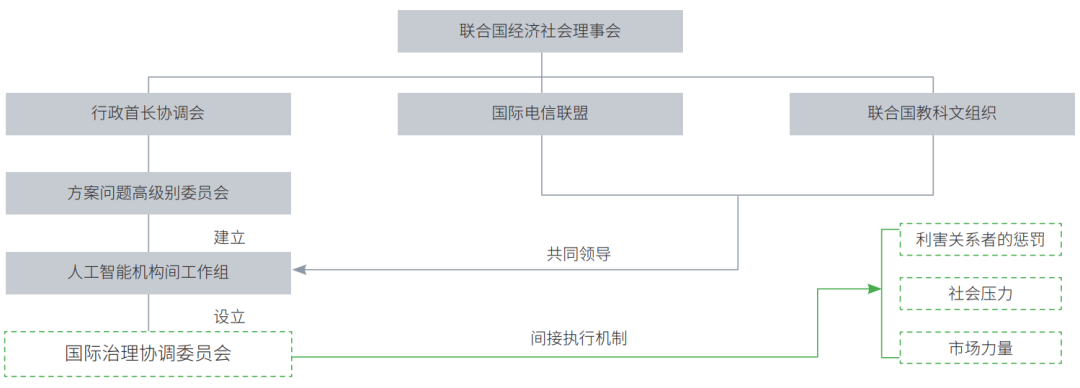Artificial Intelligence Ethical Computing
Artificial Intelligence Ethical Computing
As a scientific research field that attempts to study, imitate and expand human intelligence, artificial intelligence technology has been accompanied by deep technical ethical debates since its birth.
As a scientific research field that attempts to study, imitate and expand human intelligence, artificial intelligence has been accompanied by profound technical ethical debates since its inception. With the breakthrough progress and rapid implementation of machine learning and other related work in recent years, ethical problems have become increasingly prominent and forced the academic community and society to begin to face the ethical governance challenges of this technology. Although initial progress has been made in the normative research on ethical governance, its governance practices are still difficult to implement, and ethical practices show a trend of gradually lagging behind the needs of technological development. Therefore, establishing an ethical governance practice plan that matches the ever-developing artificial intelligence technology and realizing a benign interaction between governance theory and governance practices will be a key issue in the future development of the field of artificial intelligence. The abstraction of ethical governance theory has made it difficult to implement the ethical principles of artificial intelligence at present, and artificial intelligence ethical computing (AI) will be an important solution to this challenge. This study clarifies the importance of ethical computing by exploring the necessity of reality and the possibility of development. Based on relevant research, the research scope of ethical computing is given. According to the calculation process, the degree of cognition of ethical mechanism and the degree of autonomy of system ethical decision-making is divided. Two types of research paradigms of high-order cognition and low-order cognition of ethical computing are established, and three calculation levels of ethical measurement, ethical decision-making and ethical reasoning are abstracted according to their calculation stage. This ethical computing framework can sort out the current application of ethical computing. This article uses ethical embedding and fair machine learning as examples to illustrate the research characteristics and technical methods of the two types of research paradigms. On this basis, the construction of an ethical governance system with ethical computing as the core is further discussed and constructed, and analyses the possible solutions to resolve ethical governance dilemmas through ethical computing, and makes a prospect for the development of artificial intelligence ethical computing.
The improvements in massive data, basic computing power, intelligent algorithms, special hardware and other aspects have prompted the booming development of the artificial intelligence industry, and various technologies have continuously reshape human living habits and production methods. The application breadth of related technologies has been continuously expanded and the depth has been deepened, giving birth to various cross-integration fields including AI for [1], quantum machine learning research [2], etc. New technologies are emerging one after another, and new applications are constantly being implemented, bringing unprecedented opportunities for the development of the field of artificial intelligence. But at the same time, technical ethical anxiety is increasing, and effective ethical governance of technology is imminent. What ethical problems are facing the development of artificial intelligence technology at present? What are the difficulties in ethical governance? What technical means can assist ethical governance? This article proposes to build a technical tool system for ethical governance with artificial intelligence ethical computing (AI, referred to as ethical computing) technology as the core. What is ethical computing? What techniques are used to perform ethical calculations? How can we build an ethical governance system through this technical means? The discussion will be carried out later. Starting from the ethical issues we face, the following three typical application scenarios are as examples. (1) Artificial intelligence technology has brought major changes to the medical and health field, mainly reflected in the technical support of two forms [3]: virtual branch and physical branch. Virtual branch refers to artificial intelligence algorithms that can use big data to mine potential medical auxiliary information, including protein response prediction, drug prediction, psychological rehabilitation auxiliary treatment, etc. Physical branch refers to medical service robots supported by various types of artificial intelligence algorithms, including robot partners used to care for critically ill patients, assistant doctors and even surgeons in surgical operations [4]. In these important application scenarios related to human life and health, ethical issues are particularly prominent. It involves the issue of how to protect the privacy of stakeholders from being violated [5], and also involves the difficulty of ensuring that decisions do not cause damage to the life and health of the audience. For example, in the application scenario of artificial intelligence surgeons, how should we define whether the occurrence of an surgical accident be an accident? Who is responsible for the accident? Such problems involve various complex ethical subjects, and the ethical issues behind them are often very complex. Is it possible to help define these complex ethical issues through technical methods? (2) Self-driving cars are expected to improve transportation efficiency and reduce the probability of traffic accidents [6]. However, due to the high degree of autonomy, this scenario also involves very complex ethical issues: how do autonomous driving machines make moral decisions and how do they determine the responsibility for the accident? How should society quantify the guiding ethical principles of machine behavior? This has become an urgent issue that needs to be responded to. Related research [7] conducted a broad social experiment on major challenges in this field, collecting 40 million ethical decisions from 233 countries and regions and conducting statistical analysis, pointing out that moral trade-offs show a unified trend from the macro perspective, but there are still internal conflicts, interpersonal differences, regional and cultural differences in moral decision-making. In order to reduce the clear differences in conflicts, this field also requires more ethical dialogue and more accurate technical quantitative standards. (3) Computer-assisted decision-making is also one of the important applications of artificial intelligence. The effective mining of massive data allows it to deeply explore historical decision-making and learn decision-making elements from it. The improvement of the automation of decision-making methods can greatly improve decision-making efficiency, but the problems of bias and discrimination hidden behind it are also worrying. Typical scenarios include systems for estimating the probability of recidivism, Automatic screening of recruitment resumes, advertising push, etc. [8]. These artificial intelligence used for decision-making will have a significant impact on society and individuals, and the transparency and fairness of its decision-making mechanism need to be improved urgently. Not only decision-making systems, but also in various research such as natural language processing [9] and computer vision [10, 11], there are problems of learning and amplifying historical biases. More exploration is needed to improve these problems. At the same time, the relevant proposals for auxiliary decision-making scenarios also pointed out [12] that the application of artificial intelligence in decision-making may lead to changes in organizational culture and individual behavior. Therefore, it is also necessary to develop practical evolutionary indicators of the impact of artificial intelligence technology to measure its benefits and its long-term and short-term impact on decision-making stakeholders. The above are ethical problems existing in some classic application scenarios. The application of new technologies is constantly raising new challenges to ethical research, such as AI painting, The generative big model represented by the representative has recently triggered a discussion on copyright disputes and plagiarism issues [13]. On the basis of exploring the progress of ethical computing, the following text will also briefly discuss the problems caused by such big models. It is not difficult to see that current artificial intelligence technology has caused extensive and profound social problems, and with the development of technology, it will face more complex technical ethical dilemmas, so it is urgent to give an effective response plan. In fact, the discussion on the ethical issues of artificial intelligence [14, 15] was born as early as 1960, and the research on the ethical research of artificial intelligence accompanied the development of technology. However, early research mainly revolved around ethical theory, separated from specific application scenarios and was highly abstract. Therefore, how to effectively consider ethical factors in actual application scenarios and build a practical and feasible ethical governance plan is an important research topic. In response to ethical governance issues, in recent years, Organizations in various countries have made important efforts, put forward many technical ethical appeals, including explanatory, fairness, privacy, etc., and formulated relevant industry development norms. Although many legal norms and initiatives have been put forward, due to the ambiguity and differences of these abstract indicators, the practice of ethical governance still faces many difficulties. This article believes that concreteizing ethical norms, quantifying ethical appeals and providing technical support for ethical norms is the key to breaking the deadlock, that is, ethical calculation eliminates abstract ambiguities and provides quantitative characteristics, which is expected to make up for the differences between theory and practice. However, the key problem facing ethical calculation is: Can abstract ethical concepts be calculated? How to calculate? How should computing serve ethical governance practices? This article intends to start from the current development status and difficulties of artificial intelligence ethics research, point out the necessity of research on ethical computing. By exploring the research and development of ethical computability, discuss the possibility of ethical computing and define the concept of ethical computing. Further address the problem of how to calculate, summarize the existing calculation methods and calculation paradigms of ethical computing, and give examples of representative ethical computing technology. Finally, the relationship between computing and ethical governance will be analyzed.

The overall discussion idea is shown in Figure 1, and the explanation of ethical computing from the computing system to the ethical governance system is completed. Specifically, the second section summarizes and explores the practical background and computing history of ethical computing research. It explains the current development of ethical research, points out the development pain points of fuzzy ethical theory and limited practical feasibility in ethical governance, points out the important practical significance of ethical computing, and analyzes the research background of computational ethics on this basis. The third section gives the specific definition of ethical computing in this article, summarizes the research goals, research methods and research paradigms of ethical computing, and gives two representative work, and uses fair machine learning as a case to give examples of ethical computing. Section 4 constructs an ethical governance system based on ethical computing, and finally makes an outlook on ethical computing in Section 5.
Convenient and easy to view





![[Speaking By South China University Of Science And Technology] Humans Give Artificial Intelligence Ethics, And Breakthroughs In The Direction Of Biological Evolution Are The Key](https://lcs-sfo.k4v.com/sites/38/article/2025/02/13/63/images/7dd34943ddad152fb2596da1e7a2f9c5.jpeg)